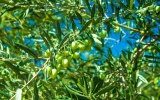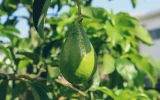What Does an Olive Tree Look Like? (With Images)
The olive tree, Olea europaea, has been cultivated for over 6,000 years, originating in the Mediterranean basin, and typically reaches heights of 8 to 15 meters. Incorporating vivid images, this article provides a visual guide to identifying and appreciating the distinctive features of olive trees, such as their longevity, leaf shape, and fruit development.
Olive trees have leaves measuring 1 to 3 inches long, displaying a shiny, dark green upper surface and a silver underside. The olive fruit, initially green, transitions to a rich black or dark purple upon maturation. They have small, fragrant, and creamy-white flowers, appearing in clusters called inflorescences.
However, depending on the species, you'll find variations in leaf size, color, and even the olives they bear, ranging from tiny, dark ones to larger, green fruits. Let's discuss further the variations in different types of olive trees.
Summary
- The olive tree presents a captivating range of colors, from the signature silvery-green of its leaves, enhanced by the contrasting silver or gray underside against the darker green top, to the varying bark hues from smooth gray in youth to textured brown-gray with age.
- Olive flowers vary, with male flowers having a yellowish-white hue and perfect flowers a greenish-yellow tint, playing crucial roles in the tree's reproductive process and fruit production, while also enhancing its aesthetic appeal.
- Olive tree leaves have a smooth, leathery texture, an adaptation for drought tolerance, arranged oppositely on branches, enhancing the tree's aesthetic appeal and making it a preferred choice for gardens.
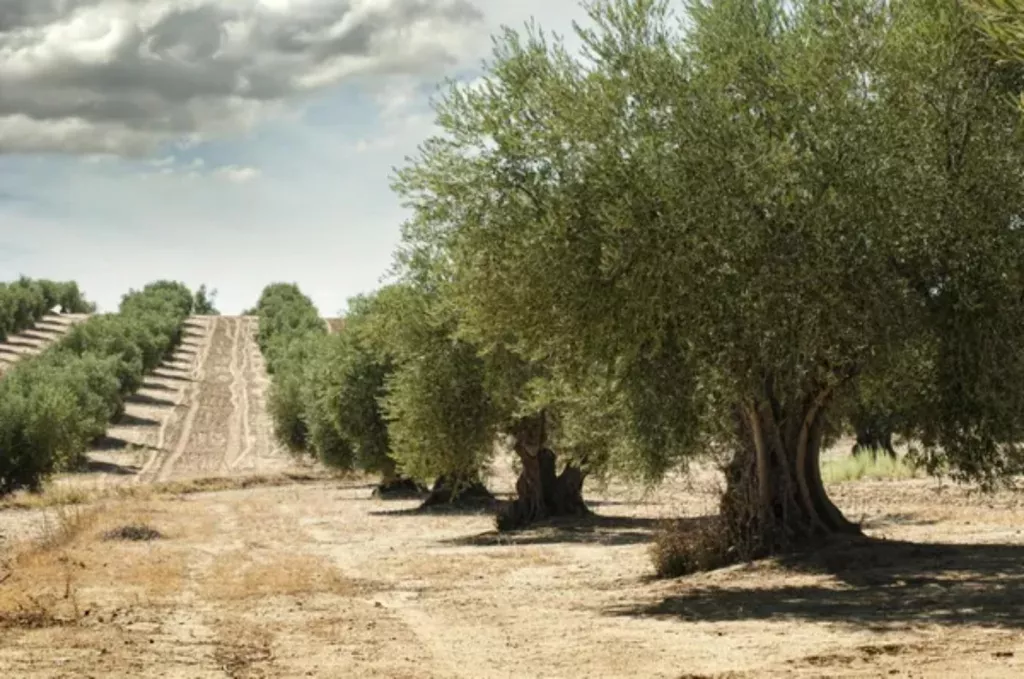
On this page:
Identifying Olive Tree Features With Visual Guide
Olive trees, with their silvery-green foliage and gnarled trunks, are easily recognizable and hold significant cultural and economic importance, especially in the Mediterranean region.
These evergreen trees thrive in warm, sun-drenched climates. They have been a part of the landscape for thousands of years, with archaeological evidence tracing their cultivation back to ancient times.
| Olive Tree Variety | Leaf Color | Fruit Color at Ripeness | Tree Size | Distinctive Traits |
|---|---|---|---|---|
| Arbequina | Dark green | Black | Small to medium | Compact, dense canopy; small, oval leaves |
| Manzanilla | Light green | Green to purple | Medium to large | Spreading canopy; larger, elliptical leaves |
| Picual | Dark green | Dark purple to black | Medium to large | Robust, upright growth; strong branches |
| Kalamata | Grey-green | Dark purple to black | Medium | Spreading habit; long, narrow leaves |
| Koroneiki | Dark green | Green to black | Small | Compact, bushy; small, lanceolate leaves |
| Frantoio | Grey-green | Purple to black | Medium to large | Vigorous, can adapt to different soils |
| Leccino | Grey-green | Dark purple to black | Medium | Upright growth with a tendency to spread; resistant to cold |
| Picholine | Bright green | Green to reddish-black | Tall | Tall, upright with slender leaves; good resistance to drought |
With numerous olive tree varieties, each has distinct characteristics. For example, the Arbequina variety, native to Spain, is known for its compact size when pruned.
On the other hand, the Mission olive tree, which has roots in California's mission history, is more cold-tolerant.
No matter the variety, you'll typically see olive trees with a wide canopy, copious branches, and fruits that have become essential in cuisines worldwide.
What Do Olive Tree Leaves Look Like?
Olive tree leaves are elongated and oblong, and typically measure up to 4 inches long. They possess a silvery-green hue that not only contributes to the tree's aesthetic but also helps differentiate it from other foliage.
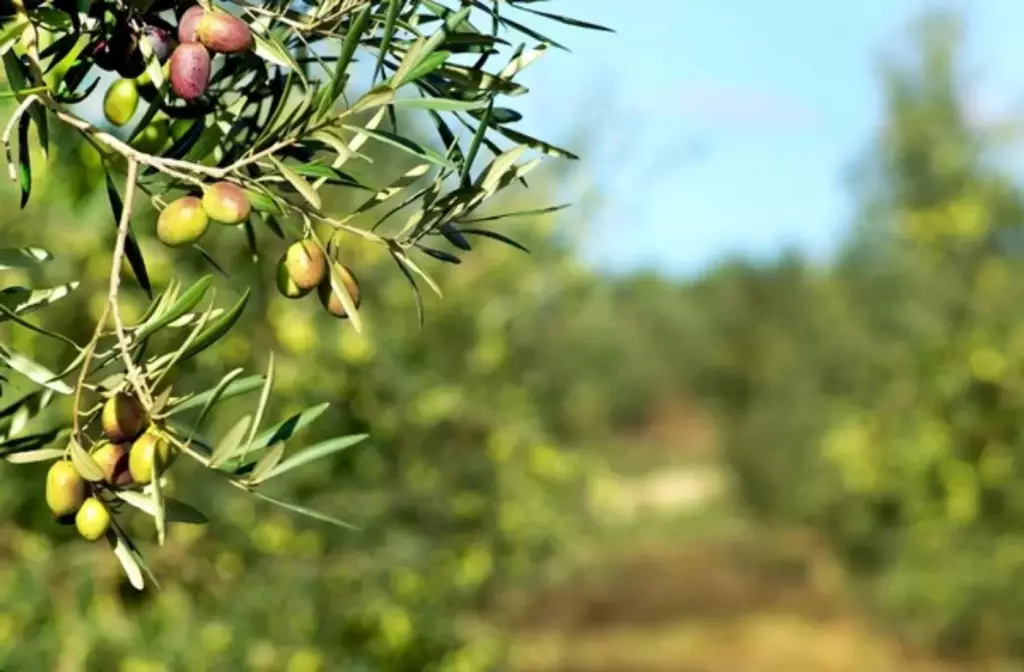
The leaf's undersides have a lighter tone, primarily due to the presence of tiny scales that reflect light; this is what gives them their silver appearance. The topside, however, is a deeper green, showcasing the leaf's two-toned nature.
When you touch an olive leaf, you'll notice it has a smooth and slightly leathery texture. This adaptation is part of the plant's drought-tolerance mechanism, enabling the tree to conserve moisture in dry climates.
Olive leaves are arranged oppositely on the branches, providing an orderly pattern to the eye.
| Feature | Description |
|---|---|
| Shape | Elongated, oblong |
| Size | Up to 4 inches long |
| Color | Silver-green, two-toned |
| Texture | Smooth, leathery |
| Leaf arrangement | Opposite on the branches |
These narrow leaves not only serve a practical purpose but also add to the visual appeal of the olive tree, making it a favored choice for gardens and landscapes.
What Do Olive Branches Look Like?
When you're admiring an olive tree, you'll notice its distinctive bark and the way its branches twist. The trunk and branches add to the tree's rustic charm and are integral to its health.
Olive trees have gnarled trunks and branches
Olive trees are known for their gnarled trunks and twisted branches. They possess a unique character that is often associated with age and resilience.

The texture of the bark can vary; it's generally smoother on younger trees but becomes deeply creviced as the tree ages. A look at distinctive bark characteristics shows how the appearance changes with the olive tree's maturity and environmental conditions.
Root System of Olive Trees
The root system of an olive tree is adaptive, thriving in a variety of soil conditions. Your olive tree's roots won't aggressively spread and are considered non-invasive, making them friendly neighbors to nearby plants and structures.
These trees are quite resourceful in their water usage. They have a root system that's excellent at extracting moisture and nutrients from the soil.
You'll find that the majority of an olive tree's roots spread out horizontally, though in particularly loose soil, some roots might extend 23 feet deep.
Here's a glance at the root system:
- Taproots: They grow vertically and provide solid anchorage.
- Lateral roots: These spread out sideways from the taproot.
Your olive tree will thrive best with thoughtful placement, considering both sunlight exposure and the type of soil.
Dry, well-draining soil is most suitable for its root system, allowing it to obtain just the right amount of water without waterlogging. With proper care, your olive tree can become a resilient and beautiful addition to your garden.
Size and Stature of Olive Trees
When you gaze upon an olive tree, you're looking at a piece of living history renowned for its distinctive growth and enduring nature. These evergreen trees are not only vital to agriculture but also steeped in cultural significance.
Growth habit
The growth habit of an olive tree reveals a slow-growing, evergreen presence in your landscape. Typically, it sports a short trunk that can appear twisted with age, giving each tree a unique character.
The crown, broad and majestic, is formed by a vast number of branches that spread out to create a lush canopy. In optimal conditions, particularly under full sun, the tree displays a vigor that contributes to its longevity.
The shape and stature of an olive tree can be quite striking, with some reaching up to 40 feet tall, but most commonly around 25 feet.
Canopy and shape
The shape of an olive tree's canopy might be rounded when young, becoming more expansive as it matures. It's common for olive trees to have a bushier form in their youth, gradually growing into an oval or asymmetrical shape.
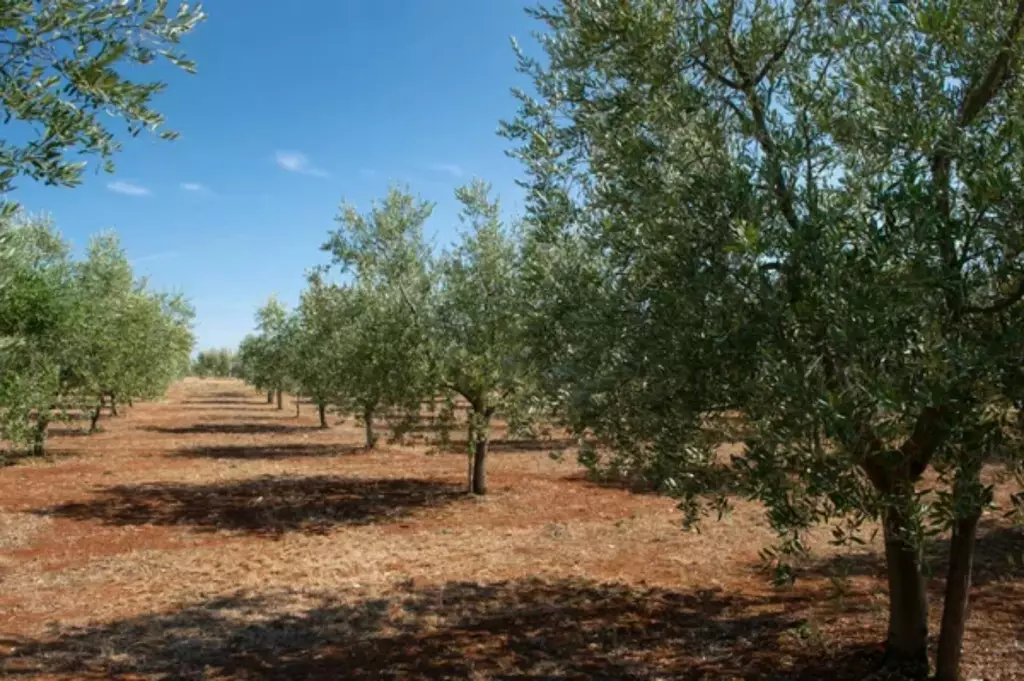
To visualize the branches, think of them as long and slender arms stretched wide to soak up the sun.
As for the tree's crown, it's the part of the tree where the branches and leaves extend from the uppermost section of the trunk.
With olive trees, the crown can be notably vast, which not only contributes to the striking appearance of the tree but also plays a crucial role in photosynthesis and fruit production. The crown's sturdy branches support the weight of olives, illustrating a beautiful merger of strength and aesthetics.
What Do Flowers on Olive Trees Look Like
When you look at an olive tree during the blooming season, typically between April and May, you'll notice the flowers emerging before giving way to fruit. Each flower is small and often cream or white-colored, presenting a subtle, understated beauty.
The buds of an olive tree flower are delicate and form in clusters, paving the way for the blooms. Once they open, the flowers release a fragrance that intimates the start of the season for olive growth.
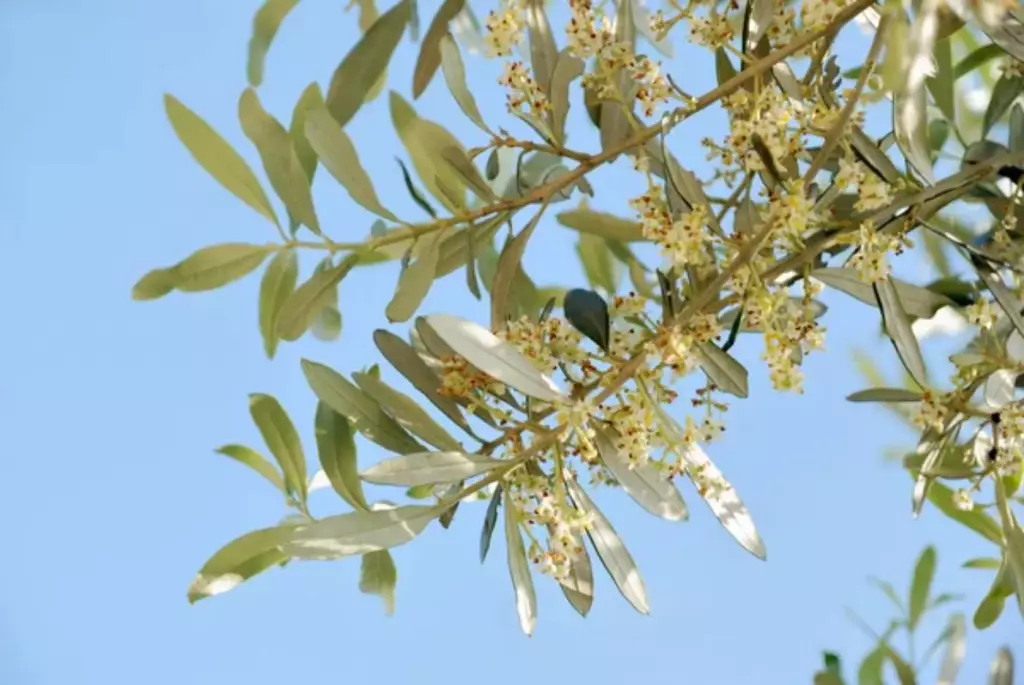
Your olive tree's flowers can differ in type: some are male with pollen-producing capabilities, while others are perfect, which means they have both male and female reproductive organs.
The color of the flowers can be a hint to their type, with male flowers showing a yellowish-white hue and female flowers tending towards greenish-yellow.
Olive tree flowers are not only essential for fruit production but they also contribute to the tree's aesthetic allure. Each flower's structure supports the olive tree's lifecycle and its capacity to yield the olives you enjoy.
The Fruits of Olive Trees
The olive, a small fruit packed with flavor and versatility, is the lifeblood of the olive tree. Specifically, it is the type of fruit known as a drupe, housing a single seed encased within a stone, also referred to as a pit.
Harvesting and varieties
You'll find that olive trees produce a wide array of fruit types, each with its own distinct flavor and oil content. Varieties such as Arbequina and Manzanilla are grown for both olive oil and table olives, while others like the Kalamata are prized for their unique taste.
The timing of the harvest can influence the flavor; olives harvested early tend to produce a more bitter oil, whereas the late harvest yields a milder taste. Harvesting olives is usually done during autumn.
Color and texture of olives
As olives mature, their color transitions from green to darker hues, with some varieties becoming black or purple, such as Nocellara del Belice.
The texture is typically smooth, with firm flesh when fresh. Green olives are often firmer and more bitter than their fully ripened counterparts.
Olive care and growth
Olive trees require careful attention to yield quality fruit. Your tree will need adequate watering and plenty of sunlight, whether you grow it in containers indoors or plant it outdoors.
Olive trees are slow-growing and need several years before they start to produce fruit, but with proper care, your tree can flourish and provide olives for many seasons, proving that they are a good investment.
What Color Is an Olive Tree?
When you observe an olive tree, you'll notice its leaves display a charming palette of colors. Primarily, the leaves flaunt a silvery-green hue, a signature look for many olive tree varieties.
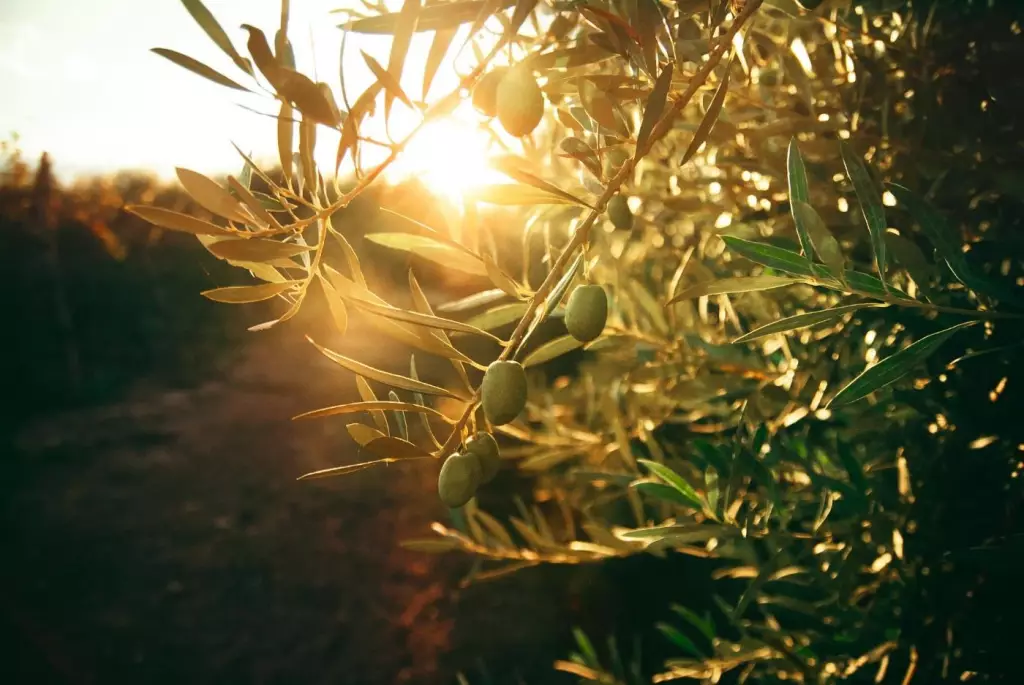
This shimmering effect is due to the underside of the leaves, which are often silver or gray, contrasting with the darker green on top. Some varieties can show more green than silver, particularly when viewed in direct sunlight.
During different seasons or stages of growth, olive leaves might also exhibit hints of purple, usually on the tips or margins, adding a touch of visual interest to your garden.
As your gaze shifts to the trunk and branches, the colors vary based on the tree's age.
Young trees often feature smooth, gray bark. But as the tree matures, the bark takes on a deeper brown-to-gray color. It's marked with textures and ridges that highlight its growth.
If the tree is fruit-bearing, small olives add pops of green or black, depending on their ripeness. Their colors blend seamlessly into the tree's overall appearance while standing out as vibrant points of interest.
